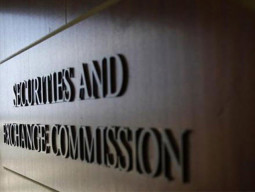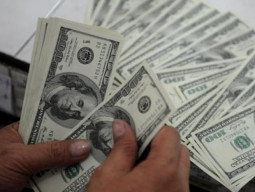
Savings mobilisation by the National Savings Schemes (NSS) in the first eight months of 2014-15 remained Rs246.5 billion, which is 93% higher than the amount of savings mobilised in the corresponding period of 2013-14.
As per the latest data released by the State Bank of Pakistan (SBP), savings mobilised under the NSS in February amounted to Rs16.6 billion, which is 46.7% less than the corresponding figure for the same month of the last fiscal year.
The latest cut of 0.5% -- or 50 basis points -- in the benchmark interest rate by the SBP last month has led to a drop of 48-72 basis points in the returns on different savings schemes. According to AKD Securities, NSS returns are now back to the levels last witnessed at the end of 2004-05. For example, the profit rate on Defence Savings Certificates decreased from 9.5% to 8.92% in April. Similarly, the return on Bahbood Savings Certificates declined from 11.28% to 10.8% with the start of the current month.

The substantial drop in savings mobilisations recorded in February was a direct result of the SBP’s monetary easing policies.
The largest jump in NSS mobilisation in the eight months was witnessed in November when NSS received over Rs90 billion. It was the same month when the SBP brought down its key interest rate by 0.5% after keeping it flat at 10% for over a year. The SBP decreased its key interest rate by a total of 200 basis points, or 2%, during the period under consideration.
The government has linked profit rates on major NSS with the yield on Pakistan Investment Bonds (PIBs). PIB yields have been coming down consistently in the wake of the SBP decreasing the benchmark interest rate. As a result, the federal government has also reduced the rates of return on various schemes up to 0.72% from April 1.
“In theory, lower returns on government savings schemes suggest a shift of liquidity to higher yielding avenues, including stocks,” AKD Securities noted. However, it added that, despite NSS returns, factors like drying out of already thin liquidity due to the sale of the government’s stake in Habib Bank and the upcoming federal budget for 2015-16 will deter alpha-seeking investors from channelling their liquidity to the stock market.
Analysts believe NSS returns will go down further in case the central bank reduces the key interest rate in the next monetary policy announcement because of declining inflation.
Savings mobilised under the NSS in 2013-14 amounted to Rs196.4 billion, which was almost half of the savings mobilisation achieved during 2012-13.
Savings mobilisation under the NSS remained Rs224.7 billion in 2009-10, Rs234.9 billion in 2010-11, Rs188.3 billion in 2011-12, Rs386 billion in 2012-13 and Rs196.4 billion in 2013-14. This translates into a compound annual growth rate of a negative 3.3% per annum for the last four fiscal years.
High mobilisation of savings under the NSS is not necessarily a good phenomenon. Government borrowings under the NSS are categorised as ‘unfunded debt’ and should thus be minimised.
According to the Ministry of Finance, the government’s unfunded debt stood at Rs2.6 trillion at the end of 2014. Its share in the government’s total domestic debt currently stands at over 22%.
Published in The Express Tribune, April 8th, 2015.
Like Business on Facebook, follow @TribuneBiz on Twitter to stay informed and join in the conversation.






1726054615-0/OpenAI-(2)1726054615-0-270x192.webp)











COMMENTS
Comments are moderated and generally will be posted if they are on-topic and not abusive.
For more information, please see our Comments FAQ